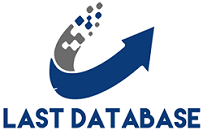DBSCAN (Density-Based Spatial Clustering of Applications with Noise)
Unlike K-Means, DBSCAN groups data points based on their density. This makes it perfect for identifying clusters of various shapes and sizes. You don’t need to set the number of clusters beforehand, which gives you more flexibility.
DBSCAN uses two main parameters: epsilon (ε) and MinPts. Epsilon is the maximum Philippines WhatsApp Number
distance between two points to be considered neighbors. MinPts is the minimum number of points needed to form a dense region or cluster.
If this point has enough neighbors within ε, it forms a cluster. DBSCAN then adds all density-reachable points to this cluster.
If a point doesn’t meet the criteria, it’s labeled as noise. But it might later join a cluster if found near another point’s neighborhood.
One of DBSCAN’s strengths is handling outliers. It marks them as noise, creating cleaner clusters. This is useful for datasets with clusters of different densities.

Finding the right values for ε and MinPts can be tricky, though. You might need to experiment a bit.
Despite this, DBSCAN shines at detecting non-linear shapes in data. This makes it a valuable tool for tasks like market segmentation, image analysis, and more.
For a simple example, DBSCAN can be used to identify clusters of customers based on their geographical locations or purchasing behavior.
Suppose we have customer purchase frequencies instead of geographical points: Using DBSCAN, we can identify clusters of high-value customers, frequent buyers, or outliers


